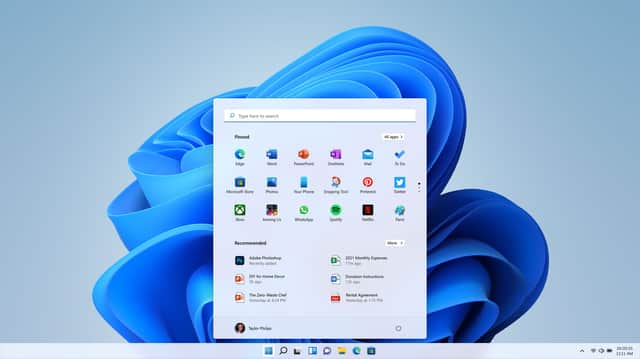TPM chip: Windows 11 requirement explained, how to check if your PC has TPM 2.0 - and how to enable module
This article contains affiliate links. We may earn a small commission on items purchased through this article, but that does not affect our editorial judgement.


Microsoft’s new-look Windows operating system with several new features, enhancements and visual changes has launched.
Windows 11 is available now as a free upgrade for eligible Windows 10 PCs.
Advertisement
Hide AdAdvertisement
Hide AdThe Start menu, a staple of Windows, is the first difference many users will notice; the Start button and menu have been moved to the centre, away from its traditional left position.
It forms part of a wider visual overhaul, which includes new-style icons and translucent, rounded windows.
But while excitement is high among PC users for the new operating system, a few - particularly those on older machines - have found they’ve been unable to upgrade to the latest version due to one mysterious initialism: TPM.
So what is a TPM? And how do you check if your PC or laptop is compatible?
Here is everything you need to know.
What is a TPM?
Advertisement
Hide AdAdvertisement
Hide AdTPM stands for ‘Trusted Platform Module’, and is a hardware-level solution for security in computing.
Most commonly, security for a computer is handled through software - think anti-virus programs and firewalls.
But since software can be altered by those with the requisite skills, even the most secure of applications are technically prone to hackers.
Inserting security at the hardware level - in this case by burning unique and secret Endorsement Keys (EK) into microchips as they are produced - means exploiting such measures becomes much more difficult.
Advertisement
Hide AdAdvertisement
Hide AdTPM chips communicate with other security systems within a PC, such as fingerprint readers or facial recognition systems, which have to confer with the TPM to allow access.
“PCs of the future need this modern hardware root-of-trust to help protect from both common and sophisticated attacks like ransomware and more sophisticated attacks from nation-states,” said David Weston, director of enterprise and OS security at Microsoft in a blog post.
“Requiring the TPM 2.0 elevates the standard for hardware security by requiring that built-in root-of-trust.”
If your machine is older than around 2014, it is unlikely it comes with TPM technology.
How do I check my computer has TPM?
There are a few ways to check if your machine has a TPM.
Advertisement
Hide AdAdvertisement
Hide AdThe most simple method is to go to the Start menu, search for Windows Security, and click on Device Security on the left-hand column.
Another window will then appear that shows if your device has a TPM installed; it should say “Security processor”, with a green tick next to the icon.
No Security processor icon = no TPM.
Another way to check if there’s a TPM installed is to type ‘Run’ into the Start search bar, then type ‘tpm.msc’ and hit Enter.
That will bring up the Trusted Platform Module (TPM) Management on Local Computer window. If it says "Compatible TPM cannot be found", then your computer doesn't have a TPM.
Advertisement
Hide AdAdvertisement
Hide AdFinally, you can download the PC Health Check app from Microsoft, which will tell you if your computer is ready for Windows 11.
Can I add TPM?
If your computer doesn’t have TPM, it is fairly easy to add it to your machine.
You’ll need to buy a compatible module for your motherboard by searching for your motherboard model and seeing if the manufacturer has released a compatible TPM.
If they have, installation is fairly simple, and all you’ll need to do is find the TPM pins on your motherboard and slot the module in.
Advertisement
Hide AdAdvertisement
Hide AdOnce you’ve installed the module physically, you’ll need to enter your computer’s BIOS menu to activate the TPM.
This can all sound rather daunting for those not used to tinkering with their machines, but there are plenty of instructional YouTube videos out there talking you through this relatively simple process.
A message from the editor:
Thank you for reading. NationalWorld is a new national news brand, produced by a team of journalists, editors, video producers and designers who live and work across the UK. Find out more about who’s who in the team, and our editorial values. We want to start a community among our readers, so please follow us on Facebook, Twitter and Instagram, and keep the conversation going. You can also sign up to our newsletters and get a curated selection of our best reads to your inbox every day.
Comment Guidelines
National World encourages reader discussion on our stories. User feedback, insights and back-and-forth exchanges add a rich layer of context to reporting. Please review our Community Guidelines before commenting.
